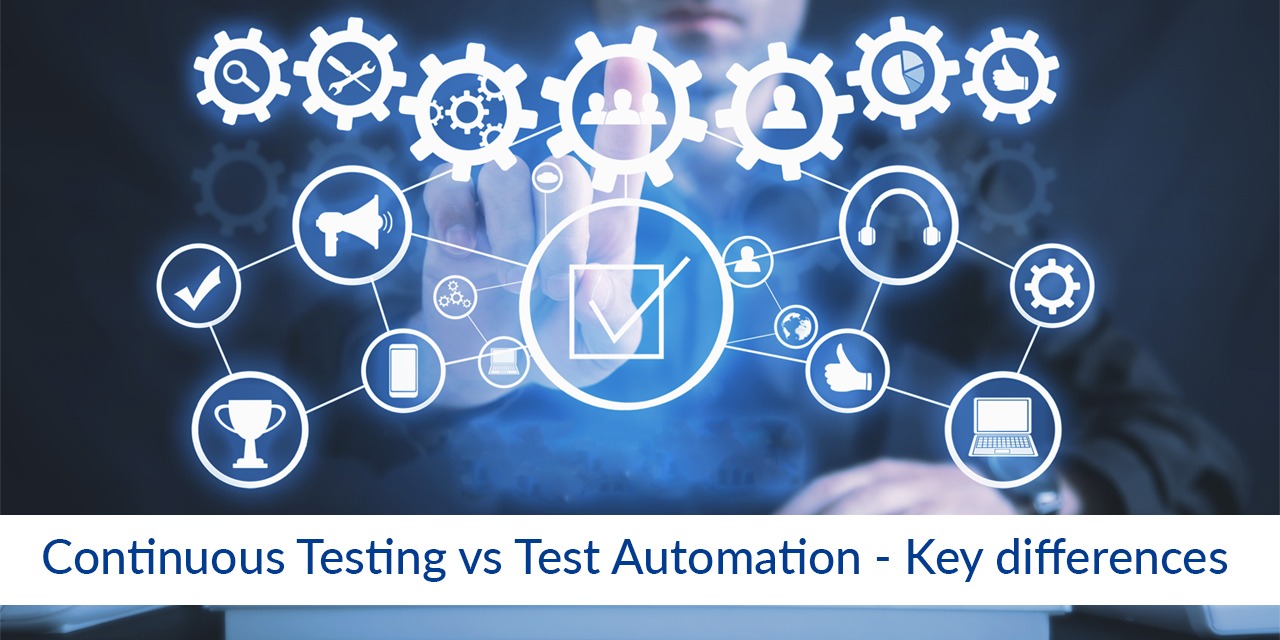- September 21, 2023
- Testing/QA/Automation
- By admin
Continuous Testing vs Test Automation – Key Differences


Quality assurance is crucial in today’s fast-paced software development environment. Numerous testing approaches and technologies have emerged as a result of the urgent requirement to create trustworthy, high-quality software. The two most popular methods are continuous automated testing and continuous testing in devops. In this article, we’ll examine the main distinctions between these two approaches and explain why they’re significant in the context of DevOps and Continuous Delivery.

Continuous automated testing is a dynamic and proactive approach to software quality assurance that easily integrates with the DevOps workflow. It basically seeks to lower corporate risk by guaranteeing that software achieves the highest standards of performance and quality. The ultimate goal of continuous automated testing is to assure efficient delivery while safeguarding the customer experience and reputation of your business.
On the other hand, continuous test automation involves the creation of test scripts that automate the execution of test cases. These scripts are sets of instructions designed to validate specific features or expected outcomes within a software application. Continuous test automation was born out of the necessity to overcome the time constraints associated with manual testing.

Continuous automated testing is all about managing risk effectively. In today’s software-driven world, businesses expose more and more of their applications to end-users, increasing the complexity and variety of potential failure points. Notable software failures have led to significant financial losses for businesses. Continuous Testing aligns testing with business risks, ensuring that high-risk candidates are identified and addressed promptly.
While continuous test automation is very good at finding particular problems in an application, it frequently lacks the depth needed to evaluate the user experience as a whole. Minor errors or inconsistencies can damage a brand’s reputation and alienate customers. In order to maintain a smooth user experience, continuous testing in devops makes sure that tests are thorough enough to identify unanticipated implications on user functionality.
In the era of Agile and DevOps, the speed of software delivery is a competitive differentiator. Test Automation originally focused on testing systems developed using waterfall methodologies, where everything was ready for testing after development was complete. However, in Agile and DevOps, testing must start in parallel with development. continuous testing in devops adapts to this fast-paced environment, providing instant feedback at every stage of the development process, ensuring that quality is maintained.
It’s crucial to understand that Continuous Testing and Test Automation are not mutually exclusive in the discussion of the two. Both methods complement each other. Test Automation is a useful tool within this plan to carry out tests effectively, and Continuous Testing is the overall strategy that assures software quality and reduces business risk.
The main lesson is that continuous testing in devops is the secret to success in the new SDLC paradigm of Continuous Delivery. Organizations may produce high-quality software that delights users and safeguards their reputation by coordinating testing with business risk, maintaining a thorough approach to user experience, and adapting to the fast-paced development environment.